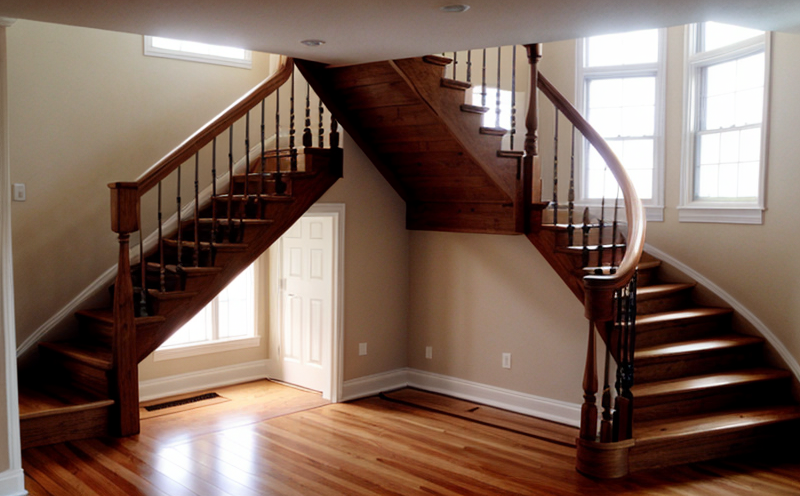Staircase inspection
In construction and building inspection, staircase inspections play a critical role in ensuring public safety. Stairs are often the first point of access to upper floors or emergency exits, making their structural integrity and compliance with regulations paramount.
The process involves several key steps: initial assessment, detailed examination, testing where necessary, and reporting findings. During an initial site visit, inspectors review blueprints and building codes relevant to staircase construction. This includes adherence to standards such as AS 1657 in Australia or ANSI A10.12 in the United States.
During a detailed examination, various tools and techniques are employed to assess different aspects of staircases:
- Visual Inspection: Checking for visible signs of wear, damage, or deterioration.
- Measurement: Ensuring dimensions meet regulatory requirements.
- Load Testing: Applying simulated loads to check the structural integrity and capacity.
- Non-Destructive Testing (NDT): Utilizing methods like ultrasonic testing or magnetic particle inspection for internal integrity checks without causing damage.
The findings are then documented meticulously, highlighting any discrepancies from standards. Reports include recommendations for necessary repairs or further investigation. This comprehensive approach ensures compliance with local and international safety regulations, enhancing public confidence in the construction industry.
Understanding the importance of staircase inspections, it is clear that they contribute significantly to overall building integrity. Compliance with relevant codes not only protects occupants but also ensures alignment with legal requirements, thereby reducing potential liabilities for owners and developers.
Customer Impact and Satisfaction
The impact of thorough staircase inspections extends beyond mere compliance; it directly influences customer satisfaction by enhancing safety standards. Quality managers and compliance officers can rest assured knowing their buildings meet stringent requirements, reducing the risk of accidents or injuries.
From an R&D perspective, staircase inspection results provide valuable data for continuous improvement in materials and design. By identifying weak points early on, developers can refine their processes to produce safer structures. For procurement teams, this translates into better material selection based on proven performance during inspections.
Satisfaction among end-users is equally important, as they benefit from secure access routes within buildings. This trust fosters positive relationships between stakeholders and contributes positively to brand reputation.
Competitive Advantage and Market Impact
- Innovation Leadership: By staying ahead of regulatory changes, companies can position themselves as leaders in safety innovation. This not only enhances their market presence but also attracts a discerning customer base seeking reliability.
- Reputation Building: Consistently delivering high-quality staircase inspections builds long-term trust and loyalty among clients. This reputation is invaluable when competing for new projects or expanding into new markets.
The demand for stringent safety measures in construction is increasing globally, driven by both regulatory pressures and consumer awareness about safety standards. Companies that excel at staircase inspection are well-positioned to capitalize on this trend, gaining market share over competitors who may not prioritize such inspections as thoroughly.
Use Cases and Application Examples
- New Construction Projects: Ensuring new staircases meet all necessary codes before occupancy is critical. This includes checking for proper fire escape routes, load-bearing capacities, and accessibility features.
- Renovation and Retrofitting: During renovation or retrofitting projects, existing staircases must be brought up to current code standards. Inspections help identify any needed modifications without compromising functionality.
In real-world applications, one example is the inspection of an old office building undergoing a major renovation project in New York City. The inspection team used advanced NDT techniques to assess the integrity of the existing staircase before suggesting reinforcement measures to meet current safety standards.





